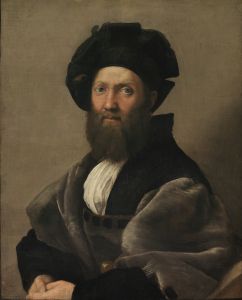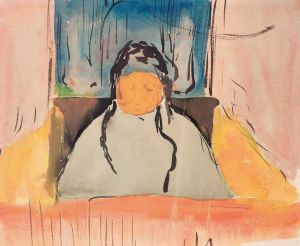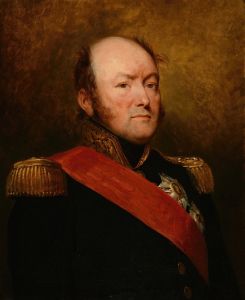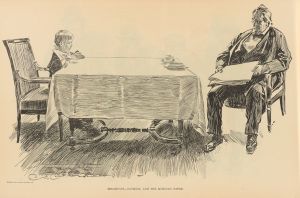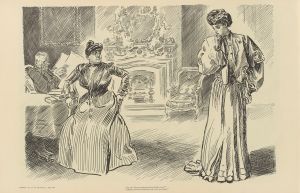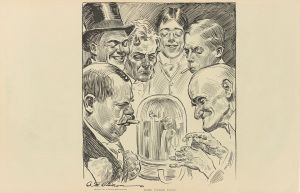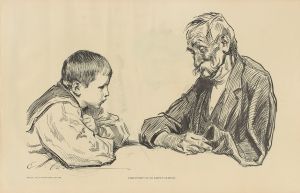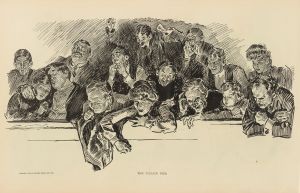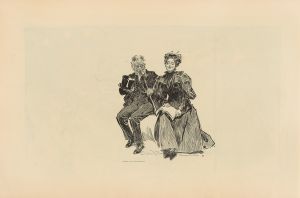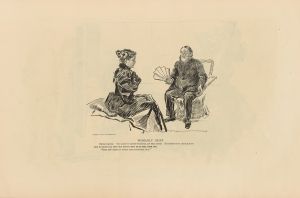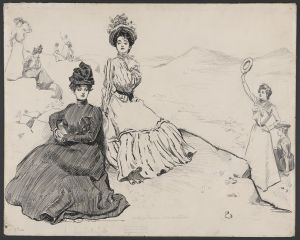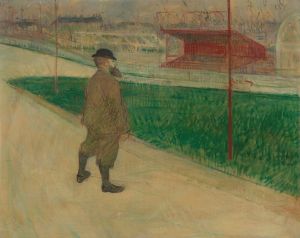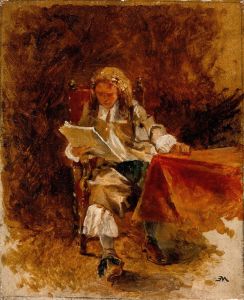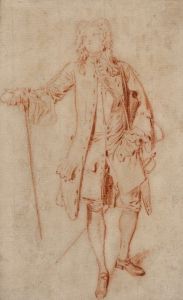
Puzzle. Find the nobleman
A hand-painted replica of Charles Dana Gibson’s masterpiece Puzzle. Find the nobleman, meticulously crafted by professional artists to capture the true essence of the original. Each piece is created with museum-quality canvas and rare mineral pigments, carefully painted by experienced artists with delicate brushstrokes and rich, layered colors to perfectly recreate the texture of the original artwork. Unlike machine-printed reproductions, this hand-painted version brings the painting to life, infused with the artist’s emotions and skill in every stroke. Whether for personal collection or home decoration, it instantly elevates the artistic atmosphere of any space.
Charles Dana Gibson was an influential American illustrator, best known for his creation of the "Gibson Girl," a representation of the idealized American woman at the turn of the 20th century. His work was widely published in magazines such as Life, Harper's Weekly, and Scribner's, and he became one of the most celebrated illustrators of his time. Among his numerous works, "Puzzle. Find the Nobleman" stands out as a notable piece, though specific details about this particular illustration are not as widely documented as some of his other works.
"Puzzle. Find the Nobleman" is part of Gibson's broader body of work that often included social commentary and humor. His illustrations frequently depicted scenes of high society, capturing the nuances of social interactions and the subtleties of class distinctions. This particular piece, as suggested by the title, likely involves a playful challenge to the viewer, inviting them to discern or identify a nobleman within the illustration. Such puzzles were a popular form of entertainment in publications during Gibson's era, engaging readers with visual wit and cleverness.
Gibson's style is characterized by its detailed line work and the ability to convey complex expressions and emotions with minimal strokes. His illustrations often featured a mix of elegance and satire, reflecting the social dynamics and cultural norms of the late 19th and early 20th centuries. The "Gibson Girl" itself became an iconic symbol, representing a new standard of femininity and independence, which was both celebrated and critiqued in his work.
While specific information about "Puzzle. Find the Nobleman" is limited, it can be understood within the context of Gibson's broader artistic themes. His work often explored themes of identity, status, and the human condition, using humor and irony to engage his audience. The puzzle format would have been an interactive way to draw readers into these themes, challenging them to look beyond the surface and consider the underlying social commentary.
Gibson's influence extended beyond his illustrations; he played a significant role in shaping American visual culture during his lifetime. His work not only entertained but also provoked thought about societal norms and expectations. Although "Puzzle. Find the Nobleman" may not be as widely recognized as some of his other pieces, it remains a testament to his skill in combining artistry with social insight.
In summary, while detailed information about "Puzzle. Find the Nobleman" is scarce, it is emblematic of Charles Dana Gibson's style and thematic interests. His legacy as an illustrator is marked by his ability to capture the spirit of his time, using his art to reflect and critique the world around him.





